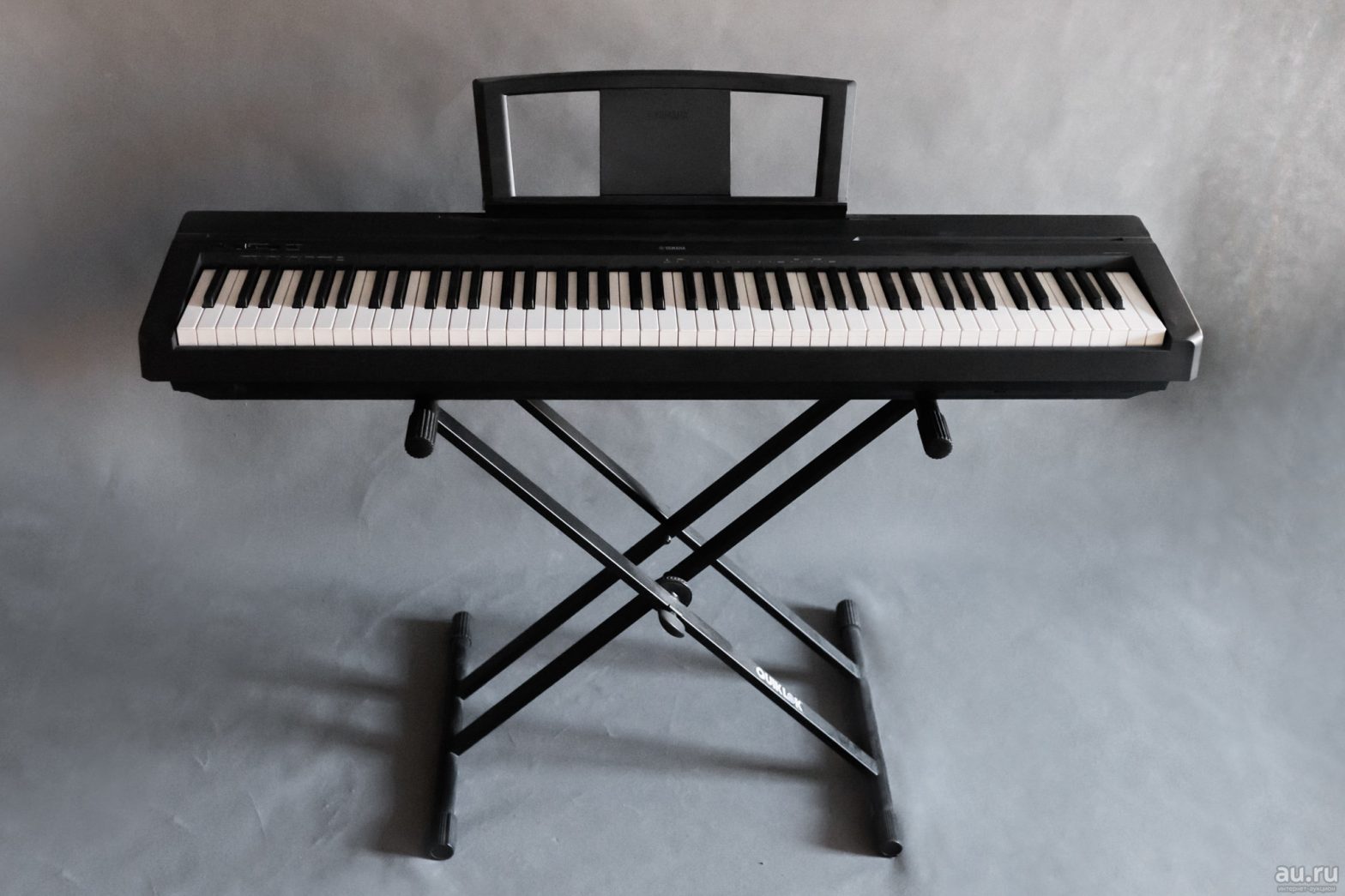With newer pianos on the market, purchasing a Yamaha P35 may leave you wanting for a few current features. Still, beginners looking for a solid practice instrument at an affordable price should still give the P35 plenty of consideration. For a novice pianist, the P35 is a feature-packed device that costs less than newer and more advanced models. Expert pianists and touring musicians should also take note of its light weight and portability. Despite its age, the P35 can still be a great device for any pianist.
FEATURES OF THE YAMAHA P35
Though newer Yamaha pianos are available — including the Yamaha P45 — these are the features and specifications that make the P35 unique.
BUILD AND DESIGN
With the P35, Yamaha set the standard of excellence for build and design of entry-level digital pianos. The device is compact and lightweight but does not compromise durability. As a sub $400 instrument, it can feel overtly plastic — but there’s no avoiding that in the entry-level price range.
The P35 has a minimal interface with only a few different buttons. They are conveniently located on the left side of the instrument and won’t get in your way. As with the body itself, however, the buttons do have a delicate and loose feel.
KEYS
The keys of the P35 are a double-edged sword. For its price, the P35’s graded and weighted keys provide some of the best value for simulating an acoustic experience. On the other hand, the keys themselves have an overtly plastic feel that diminishes from that simulation.
Though cheaper materials may have been necessary to keep costs down, the touch responsiveness of these keys is what really stands out. Every key can be played with four levels of sensitivity. Above all other features of the piano, this is what expert pianists will appreciate the most. These keys encourage you to play with emotion and finesse.
VOICES AND SAMPLE QUALITY
If there’s one category for which Yamaha is celebrated, it’s sample quality. The P35 is no exception. As with their other digital pianos, Yamaha collected 352 different samples of each piano voice featured on the P35. This ensures that all voices are compatible with the four-level sensitivity of the keys.
In all, the P35 offers 10 voices that include several pianos, a harpsichord, an organ and more. Even though its samples and voices are high quality, this is the first area the P35 truly shows its age. The Yamaha P45, the successor to the P35, is regarded for upgraded piano samples recorded with higher quality instruments.
For what it’s worth, the P35 offers dual mode, voice layering, voice splitting and advanced wave technology. These voice features turn the P35 into a formidable device for teaching and learning piano.
CONNECTIVITY AND TECHNICAL SPECIFICATIONS
It’s impressive how well the P35 holds up technologically in the modern market, but it does come with some glaring weaknesses. As far as connectivity, it does not have a USB port. Instead, it features MIDI in and MIDI out ports. These can still be helpful for some, but they aren’t as streamlined as USB.
Its other glaring weakness is its limited polyphony. At 32 notes, most beginners won’t notice any sort of limitations. Experts, however, will notice the limitations immediately. The P45 and other newer models have helped set 64-note polyphony as the new industry standard.
The speakers of the P35 are a technological highlight. Years later, these speakers sound as full as some of the P35’s newer competitors. Though it’s always better to plug into secondary speakers if the option is available, the built-in speakers will highlight most of the depth of Yamaha’s samples.







